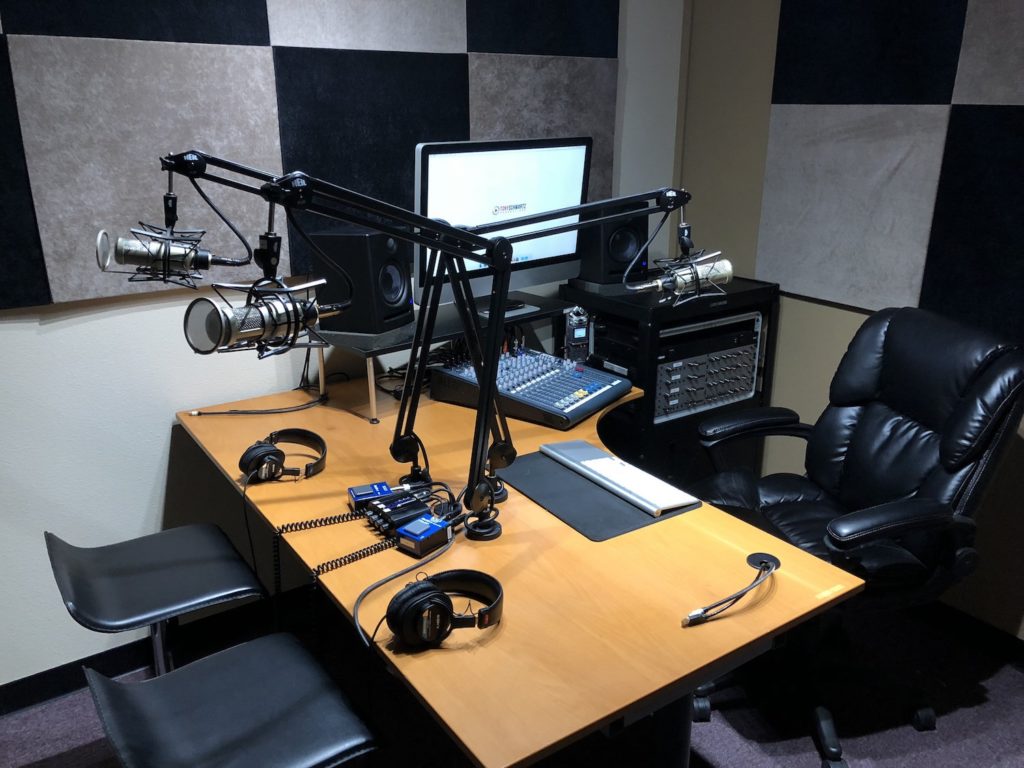Podcasting has truly taken off. More people are creating their own programs and publishing them online. You don’t have to apply at a radio station just to get your own show as anyone with a good concept and a pleasant voice can do it. A bit of technical knowhow and quality equipment wouldn’t hurt either. A lot of podcasters started out in their homes using simple tools and grew from there. They created their own podcast studio in their bedrooms, attics, basements, garages, and so on. You can do it, too. So what does a podcast studio consist of?
Microphone
The most important part of the whole setup is the microphone. It will pick up your voice and send it to your recording device, usually a computer. You need to get the best unit you can afford because this input will have a domino effect on the rest of the process. For example, if the mic picks up noise then you will have to clean up the audio during editing so that listeners won’t get distracted. Be mindful of the frequency response as well, especially if you are trying to record live music or anything other than voice conversations. Consider buying accessories like a boom arm, pop filter, and shock mount.
Headphones
You will need headphones to monitor your recording. By using headphones, you can hear your voice more clearly. You will notice drops in volume, static noise, and other issues real-time. They will let you make corrections right away instead of getting surprised later during playback. Be sure to get one that covers the full ear for isolation and noise reduction. The headphones should not leak sound from the edges as this might get picked up by a sensitive mic. It might create an undesirable echo effect that is hard to edit out. Of course, they should be comfortable despite long periods of wear.
Mixer
A mixer, as the name implies, combines all audio inputs and conditions the sound for recording. For example, you can plug several microphones and even your mobile device. You can control the volume of each input which is useful when there are several speakers. Raise the volume when you want to focus on a person during his turn and reduce it when he is finished. Move on to the next speaker, and so on. This prevents them from talking at the same time at the same level as that would be confusing to listen to. Mixers also have equalizers and other special effects that can improve the sound.
Portable Recorder
Most people record to their computer but sometimes this is not possible. A portable recorder can act as backup in case the computer fails. Plug it into a mixer and proceed as normal. It is also handy for times when you want to record a podcast outside of the studio. For example, you may want to cover an event such as trade show, a product launch, a party, a race, or something else that is held outdoors. Most of these have their own mic and digital storage space. They should be able to serve you well in a pinch.
Sound Conditioner
Lastly, consider improving the acoustics in your podcast studio by using sound conditioners. These are things that can prevent your recording from sounding like you were talking in a bathroom with too much reverb. Sound waves bounce off the walls of a room. There could be multiple bounces in tiny rooms before the waves dissipate. If you are on a budget, then just use old blankets to cover the shiny walls and absorb the waves. If you have the money, then buy acoustic foam in pyramids, wedges, or eggshell patterns.
Looking for a great podcast studio? Real News Communication

